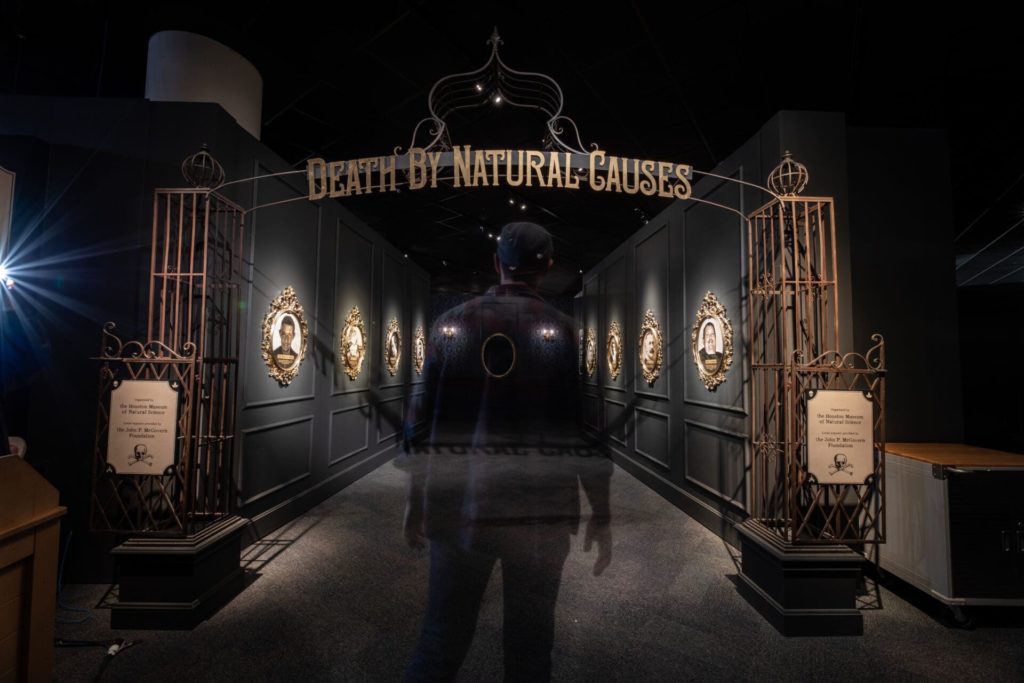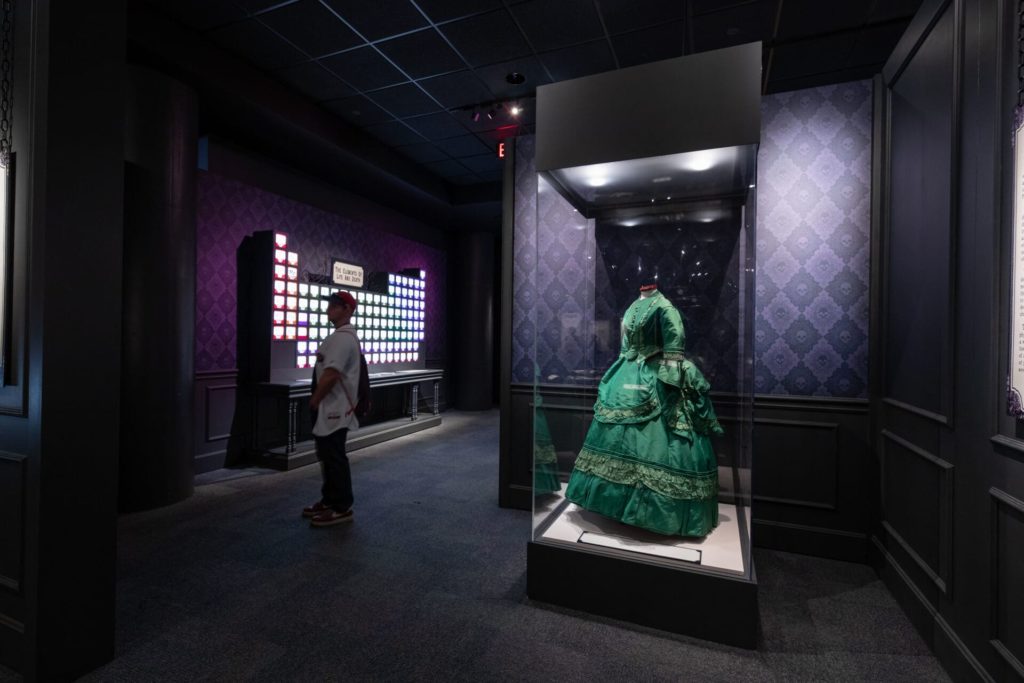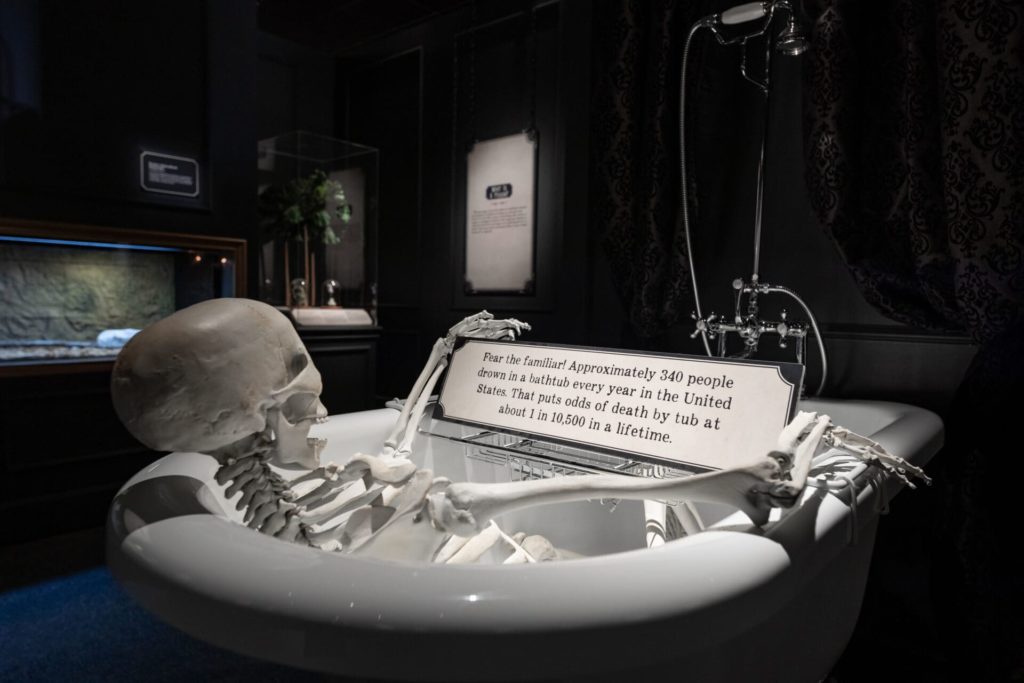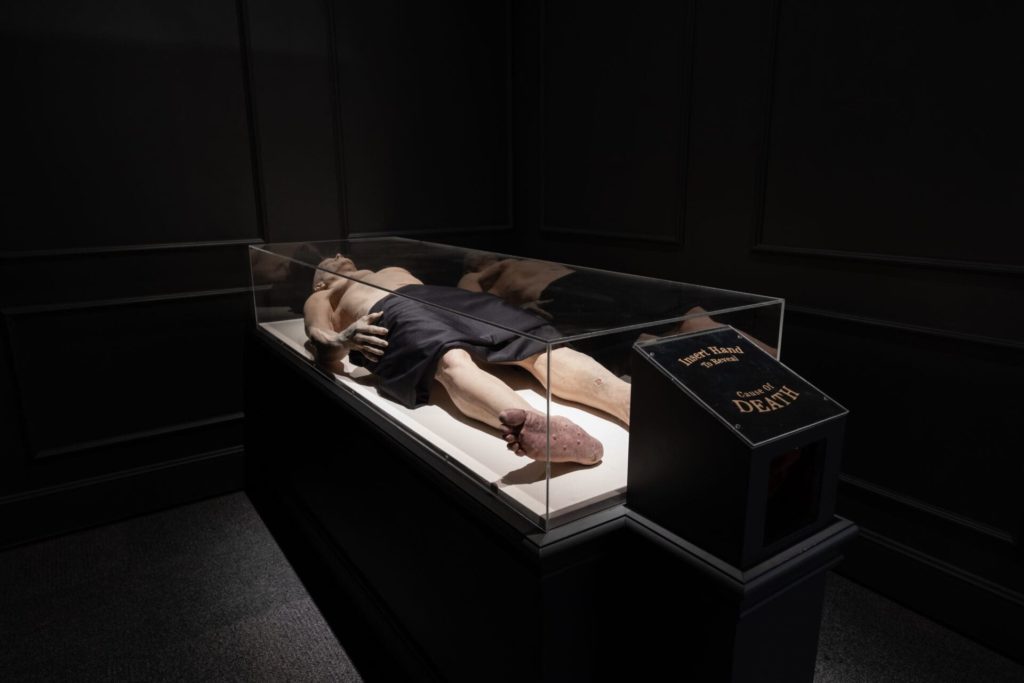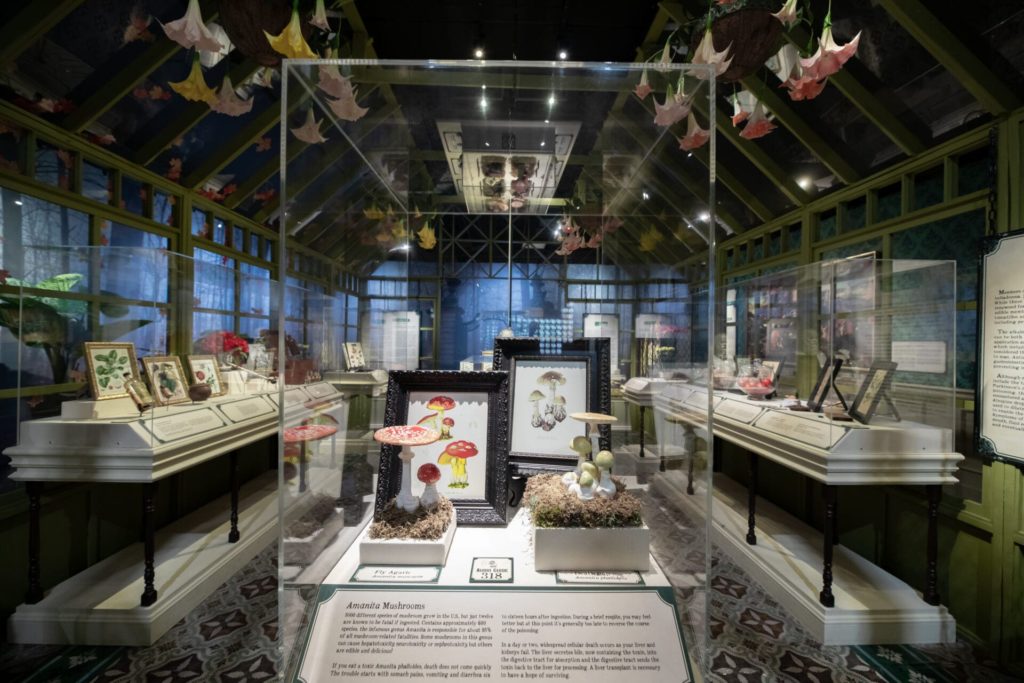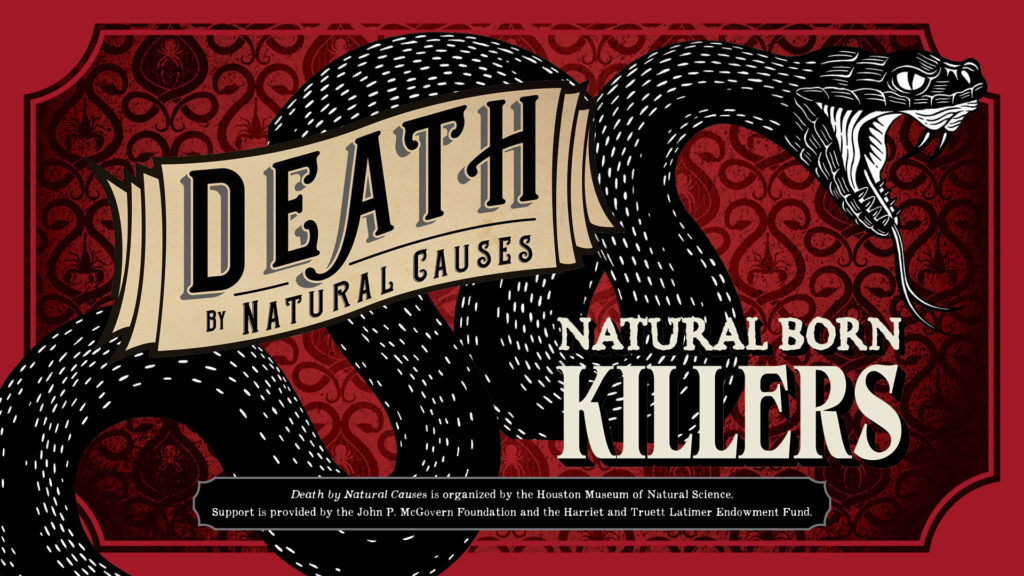Explore an array of peculiar demises, safely, with fan-favorite exhibition Death by Natural Causes
HOUSTON, TX—The breathtaking beauty of the natural world holds a surprising amount of wonder – equally awe-inspiring as it is dangerous. Lush rainforests, teeming with vibrant life, can harbor silent predators like venomous snakes, spiders, and scorpions that deliver painful and sometimes fatal bites, as well as seemingly innocuous plants that can cause uncomfortable rashes or much worse. Survive these cruel causes for concern and learn about the range of animal, vegetable, and mineral dangers that lurk in the natural world, when the Houston Museum of Natural Science (HMNS) re-opens Death by Natural Causes on June 28.
This lethal, yet adored, special exhibition provides visitors an opportunity to discover what drove Van Gogh mad, why tomatoes were deemed inedible 500 years ago, and many things that are far more likely to kill you than sharks.
“Death by Natural Causes has been one of the Museum’s most popular exhibits,” says Nicole Temple, VP of Education for HMNS and exhibit spokesperson. “Not a week goes by without our guests asking us to bring it back – and we listened!”
Unearth the “Assassin bug,” which attaches to its host’s face and can cause heart complications with a bite. Or maybe the Mojave rattlesnake might strike your fancy – the slithering serpent with the most potent rattlesnake venom. Come face to face with the giant Japanese hornet, which kills around 50 people per year and can kill one honeybee every two seconds in a hive – a hornet so dangerous that bees have learned how to “cook” them alive. You’ll even encounter a few live, deadly animals up close and personal in this unconventional exhibition.
Notable historical events are also presented, such as the story of the “Radium Girls” – female factory workers who were employed in the early 1900s to paint glow-in-the-dark radium on watch faces, only to die from radiation poisoning later on.
Resist the temptation to eat the Amanita mushroom, the very organism responsible for approximately 95% of all mushroom-related fatalities. This attractive little fungus causes delirium, nausea and depresses the nervous system leading to seizures (and, hopefully, a coma). It isn’t very pleasant, and requires quick, clever, and intense medical care to treat effectively.
Visit Death by Natural Causes and explore these and many more of the deadliest, yet fascinating, aspects of this world we share.
Death by Natural Causes is organized by the Houston Museum of Natural Science. Support is provided by the John P. McGovern Foundation and the Harriet and Truett Latimer Endowment Fund.
Death By Natural Causes will be on display beginning June 28. For ticket prices or more information, visit our website at www.hmns.org or call (713) 639-4629.
About Houston Museum of Natural Science
The Houston Museum of Natural Science—one of the nation’s most heavily attended museums—is a centerpiece of the Houston Museum District. With four floors of permanent exhibit halls, and the Wortham Giant Screen Theatre, Cockrell Butterfly Center, Burke Baker Planetarium and George Observatory and as host to world-class and ever-changing touring exhibitions, the Museum has something to delight every age group. With such diverse and extraordinary offerings, a trip to the Houston Museum of Natural Science, located at 5555 Hermann Park Drive in the heart of the Museum District, is always an adventure.
###
